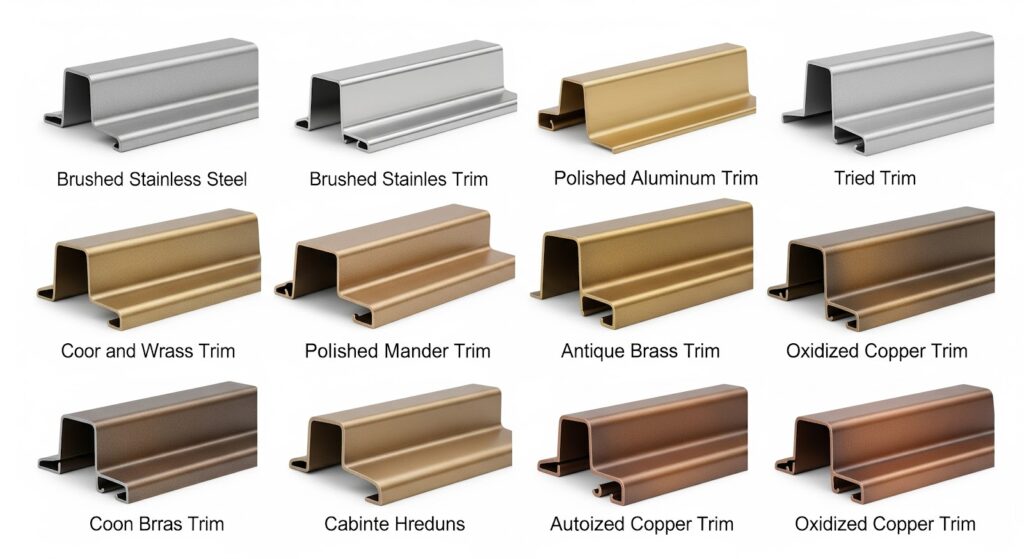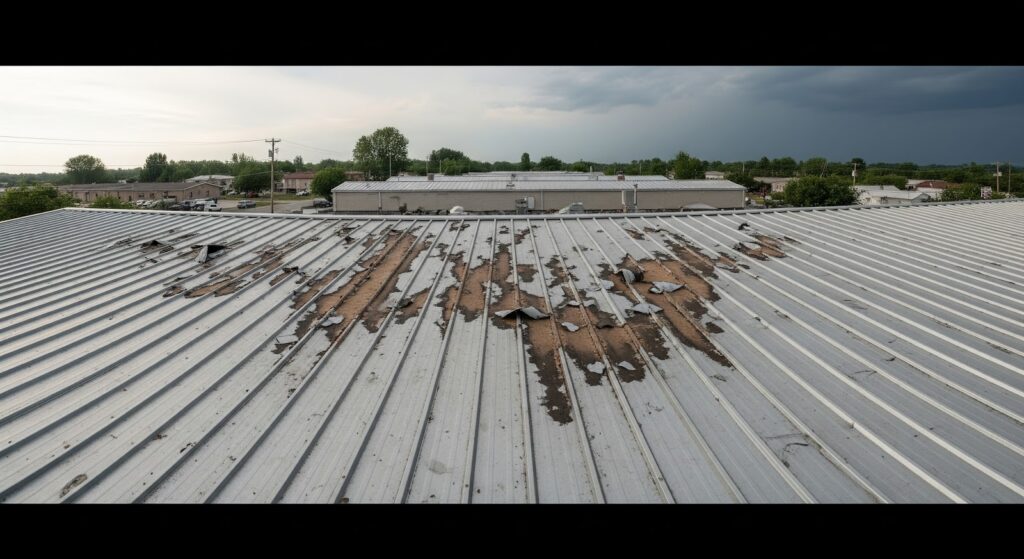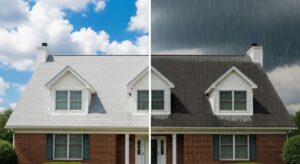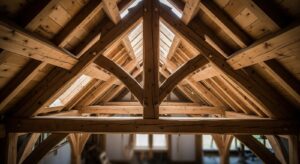You’ve installed beautiful metal siding on your building, but something looks… unfinished. The edges are rough, gaps show, and weather is sneaking in. That’s where metal siding trim pieces become your best friend! These essential components are the difference between a DIY disaster and a professional-looking installation that lasts decades.
Whether you’re working on a residential home or commercial metal building, understanding trim options saves you money, prevents weather damage, and creates that polished look that makes neighbors stop and stare. Let’s dive into everything you need to know about choosing and installing the perfect trim for your project.
Why Metal Siding Trim Pieces Matter More Than You Think
Metal siding trim pieces serve dual purposes that make them absolutely essential for any serious building project. First, they provide critical weather sealing that prevents water, wind, and pests from infiltrating your building envelope. Second, they create clean, professional-looking transitions between different surfaces and materials that separate amateur installations from expert craftsmanship.
Without proper trim installation, even the highest quality metal siding looks incomplete and performs poorly over time. Water infiltration through untrimmed edges causes structural damage, mold growth, and insulation problems that cost thousands to repair. Smart builders invest in quality metal siding trim from the beginning rather than dealing with expensive problems later.
Professional contractors understand that trim selection affects both immediate appearance and long-term performance. Quality exterior metal trim systems accommodate thermal expansion, resist corrosion, and maintain their appearance for decades. Cheap alternatives fail quickly, requiring expensive replacement and potentially damaging adjacent materials during removal.
Understanding Different Types of Metal Trim Solutions
Essential Roof and Siding Connections
Roof siding trim represents one of the most critical transition areas requiring specialized attention. These connections experience severe weather exposure, thermal cycling, and structural movement that demands robust trim solutions. The junction between roofing and siding materials creates a natural weak point where water infiltration commonly occurs without proper protection.
Professional installations utilize specially designed metal roofing trim details that channel water away from vulnerable areas while accommodating the different expansion rates of roofing and siding materials. These trim pieces often include multiple overlapping layers that create redundant water barriers, ensuring reliable protection even when individual components experience minor failure.
Modern metal building trim details incorporate advanced engineering that addresses thermal movement, wind uplift, and moisture management in integrated systems. These comprehensive solutions eliminate the guesswork involved in selecting compatible components while ensuring optimal performance throughout the building’s service life.
Foundation and Base Protection
Bottom trim for metal siding protects the most vulnerable area of your building envelope where siding meets foundation or ground level. This critical junction experiences splash-back from rain, snow accumulation, and ground moisture that can cause rapid deterioration without adequate protection.
Quality base trim systems elevate siding materials above grade level while creating effective moisture barriers that prevent capillary action and direct water infiltration. These systems often include integrated drip edges and ventilation features that promote air circulation behind siding materials, preventing the moisture accumulation that leads to corrosion and structural damage.
Building trim at the foundation level requires special consideration for different foundation materials, soil conditions, and drainage characteristics. Professional installations include proper flashing, vapor barriers, and expansion accommodation that ensure long-term performance regardless of environmental conditions.
Comprehensive Metal Building Solutions
Metal building trim systems for commercial and industrial applications require enhanced durability and weather resistance compared to residential installations. These buildings often experience more severe environmental exposure, greater structural movement, and higher performance expectations that demand premium trim solutions.
Sheet metal trim used in commercial applications typically incorporates heavier gauge materials, enhanced corrosion protection, and specialized connection methods that accommodate larger panel sizes and greater structural loads. These commercial-grade systems often include factory-applied finish systems that provide superior color retention and weather resistance compared to field-applied alternatives.
Professional metal building trim details address complex geometric transitions, equipment penetrations, and architectural features that require custom fabrication and specialized installation techniques. These details often represent the most challenging aspects of metal building construction, requiring experienced contractors and quality materials for successful completion.
Essential Metal Siding Components and Parts
Core Trim Pieces Every Project Needs
Metal siding parts include numerous specialized components designed for specific applications and connection requirements. Understanding these different pieces helps you select appropriate materials while avoiding costly mistakes that plague inexperienced builders.
Corner trim pieces handle both inside and outside corner transitions, providing clean appearances while protecting vulnerable edge areas from weather infiltration. These components must accommodate siding thickness variations, thermal movement, and installation tolerances while maintaining consistent reveal lines and weather sealing.
Window and door trim components create professional transitions between siding materials and opening frames. Quality metal trim pieces for these applications include integrated flashing systems, expansion accommodation, and standardized dimensions that ensure compatibility with common window and door sizes.
J-channel and starter strips provide essential foundation elements that establish proper siding alignment and elevation. These components often determine the success of entire installations, making quality selection and proper installation crucial for optimal results.
Specialized Steel Building Applications
Steel building trim components must withstand more demanding conditions than residential applications while accommodating larger structural movements and more severe weather exposure. These commercial-grade components typically feature enhanced materials, thicker gauge construction, and specialized connection methods designed for long-term performance.
Steel building trim pieces often incorporate modular design concepts that simplify installation while ensuring consistent appearance across large building faces. These systems reduce labor costs and installation complexity while providing superior performance compared to field-fabricated alternatives.
Trim steel used in commercial applications undergoes enhanced quality control processes that ensure consistent dimensions, material properties, and finish quality. This attention to detail becomes critical in large installations where minor variations can create significant appearance and performance problems.
Advanced Trim Technologies
Metal siding components continue evolving with improved materials, manufacturing techniques, and installation methods that enhance both performance and aesthetics. Modern systems often incorporate features that weren’t available even five years ago, making current installations significantly superior to older approaches.
Metal siding trim and accessories now include integrated gasket systems, snap-together connections, and factory-applied sealants that eliminate many traditional installation challenges. These advances reduce labor requirements while improving weather sealing and long-term reliability.
Metal panel trim systems increasingly utilize computer-aided design and manufacturing that ensures precise fit and optimal performance. These precision-manufactured systems eliminate the trial-and-error fitting common with generic trim pieces while providing superior weather protection and appearance.
Material Selection and Quality Considerations
Understanding Different Metal Options
Tin trim represents the traditional approach to metal trim applications, though modern alternatives often provide superior performance and longevity. While tin offers good corrosion resistance and workability, it lacks the strength and finish options available with contemporary materials.
Steel siding trim provides excellent strength and durability while offering the widest range of finish options and colors. Modern steel trim incorporates advanced coating systems that provide decades of maintenance-free service while resisting corrosion, fading, and mechanical damage.
Aluminum trim offers the best corrosion resistance for coastal and industrial environments where salt exposure or chemical contamination creates challenging conditions. While aluminum costs more initially, its superior longevity often makes it the most economical choice for demanding applications.
Quality Standards and Performance Criteria
Metal siding trim types vary significantly in quality, with premium products incorporating features that justify their higher costs through superior performance and longevity. Understanding these quality differences helps you make informed decisions that optimize both initial costs and long-term value.
Gauge thickness affects both strength and appearance, with heavier gauges providing better dent resistance and more consistent reveal lines. However, excessively heavy materials can create installation challenges and unnecessary costs without proportional benefits.
Coating systems represent the most critical factor affecting long-term performance, with premium systems providing decades of fade resistance and corrosion protection. Quality coatings justify their higher costs through reduced maintenance requirements and extended service life.
Installation Best Practices and Professional Tips
Proper Planning and Measurement
Successful metal siding trim pieces installation begins with careful planning and precise measurement that accounts for thermal expansion, structural tolerances, and weather sealing requirements. Professional contractors understand that preparation time invested upfront prevents expensive mistakes and callbacks.
Material ordering requires careful calculation that includes waste factors, corner conditions, and special details that affect total quantities. Under-ordering creates project delays and potential color matching problems, while over-ordering wastes money and storage space.
Installation sequencing affects both efficiency and quality, with proper order ensuring optimal fit and weather protection. Professional contractors follow established procedures that maximize productivity while ensuring consistent results.
Advanced Installation Techniques
Metal siding trim details often require specialized tools and techniques that ensure proper fit and long-term performance. These professional methods eliminate common problems while creating installations that meet or exceed manufacturer specifications.
Expansion accommodation represents one of the most critical installation considerations, with inadequate provision causing buckling, fastener failure, and premature wear. Professional installations include calculated expansion gaps and specialized fastening methods that accommodate thermal movement.
Weather sealing techniques ensure optimal performance while maintaining clean appearances. Quality installations include proper sealant selection, application timing, and tooling methods that create durable, attractive joints.
Cost Analysis and Budget Planning
Understanding True Project Costs
Metal siding trim represents a significant portion of total project costs, typically accounting for fifteen to twenty-five percent of material expenses. Understanding these cost implications helps you budget appropriately while making informed decisions about quality levels and installation methods.
Labor costs vary significantly based on complexity, accessibility, and quality requirements. Simple installations may require minimal skilled labor, while complex details often demand experienced professionals with specialized tools and techniques.
Long-term value considerations often favor higher quality materials and professional installation despite increased initial costs. Quality trim systems provide decades of maintenance-free service while protecting substantial investments in siding materials and building structures.
Investment Protection Strategies
Metal building trim details protect substantial investments in building materials, structural systems, and interior finishes. Quality trim installation prevents weather damage that could cost thousands to repair while maintaining building values and operational efficiency.
Maintenance requirements vary dramatically between quality levels, with premium systems requiring minimal attention while budget alternatives often need frequent repairs and early replacement. Understanding these long-term implications helps justify appropriate quality investments.
Warranty considerations become important for commercial applications where building downtime creates significant costs. Quality trim systems often include extended warranties that provide protection against material defects and performance failures.
Future Trends and Innovations
Modern metal siding trim pieces continue evolving with improved materials, manufacturing processes, and installation methods that enhance both performance and cost-effectiveness. These advances benefit both contractors and building owners through improved results and reduced costs.
Smart manufacturing techniques increasingly provide custom trim solutions that eliminate field fabrication while ensuring optimal fit and performance. These precision-manufactured systems reduce installation time while improving consistency and quality.
Sustainable materials and manufacturing processes address environmental concerns while often providing superior performance characteristics. These eco-friendly options increasingly offer the best combination of environmental responsibility and building performance.
Take Action: Get Professional Results Today
Don’t let your metal siding project look amateur because of inadequate trim selection or installation. Quality metal siding trim pieces transform ordinary installations into professional-looking systems that provide decades of reliable performance while protecting your substantial investment.
Whether you’re planning a new installation or upgrading existing trim systems, professional consultation ensures optimal results while avoiding costly mistakes that plague DIY attempts. Contact experienced metal siding professionals today for expert guidance on trim selection, installation planning, and long-term maintenance strategies.
Your building deserves the protection and professional appearance that only quality metal siding trim provides. Don’t compromise on this critical component that affects both immediate results and long-term performance. Invest in quality trim systems today and enjoy decades of worry-free building protection with the professional appearance that makes your project stand out from ordinary installations.
If you’re considering a metal roof or currently own one, you’ve probably wondered about potential challenges. While metal roofing offers exceptional durability and longevity, understanding the biggest problem with metal roofs helps you make informed decisions and prepare for proper maintenance strategies that ensure decades of reliable performance.
The biggest problem with metal roofs isn’t actually a single issue but rather a combination of challenges that, when understood and properly addressed, become manageable aspects of metal roof ownership. From thermal expansion to fastener failure, these challenges have well-established solutions that experienced contractors implement routinely.
Find Metal Roof Challenges: The Complete Picture
The biggest problem with metal roofs varies depending on climate conditions, installation quality, and maintenance practices. However, most issues fall into several predictable categories that homeowners can anticipate and address proactively.
Thermal expansion represents one of the most significant challenges facing metal roof systems. As temperatures fluctuate throughout daily cycles and seasonal changes, metal panels expand and contract continuously. This movement creates stress on fasteners, sealants, and panel connections that can lead to loosening, cracking, or failure over time. The constant movement makes the biggest problem with metal roofs a dynamic issue requiring flexible solutions rather than rigid fixes.
Fastener failure emerges as another critical concern when discussing the biggest problem with metal roofs. Metal roofing systems rely heavily on mechanical fasteners to secure panels to underlying structures. These fasteners experience continuous stress from thermal movement, wind uplift, and structural settling. When fasteners fail or loosen, they create entry points for water infiltration while compromising the roof system’s structural integrity.
Sealant degradation compounds these challenges by allowing water infiltration at joints, seams, and penetrations. Even premium sealants have finite service lives, typically ranging from ten to twenty years depending on environmental exposure and product quality. As sealants age and lose flexibility, they crack or separate from metal surfaces, creating pathways for water infiltration that can cause extensive interior damage.
Comparative Analysis of Metal Roof Problems
| Problem Category | Severity Level | Frequency | Cost to Repair | Prevention Difficulty |
|---|---|---|---|---|
| Thermal Expansion | High | Continuous | $500-2,500 | Moderate |
| Fastener Failure | Very High | Common | $1,000-5,000 | Easy |
| Sealant Degradation | High | Predictable | $300-1,500 | Easy |
| Corrosion Issues | Medium | Variable | $800-3,500 | Moderate |
| Installation Errors | Very High | One-time | $2,000-15,000 | Difficult |
| Noise Problems | Low | Constant | $500-2,000 | Easy |
| Ice Dam Formation | Medium | Seasonal | $1,200-4,000 | Moderate |
| Color Fading | Low | Gradual | $3,000-8,000 | Difficult |
This comparison reveals that the biggest problem with metal roofs often involves multiple interconnected issues rather than isolated problems. Fastener failure and installation errors typically create the most expensive repair situations, while thermal expansion affects virtually all metal roof systems continuously.
Thermal Expansion: The Hidden Challenge
When examining the biggest problem with metal roofs in detail, thermal expansion stands out due to its universal impact on all metal roofing systems. Metal panels can expand several inches during temperature swings, putting stress on connection points and adjacent components.
Steel roofing expands at about 0.0000065 inches per inch per degree Fahrenheit. For a forty-foot panel with a 100-degree temperature swing, expansion reaches over three inches. This movement occurs continuously, requiring accommodation for long-term performance.
Aluminum expands nearly twice as much as steel, making it more susceptible to thermal movement issues. This requires more robust accommodation and frequent maintenance.
Copper roofing falls between steel and aluminum, but its high thermal conductivity leads to rapid expansion and contraction cycles, causing more severe stress on connections.
The biggest problem with metal roofs is how these thermal movements affect their longevity and performance over time.
Installation Quality: The Foundation of Success
Poor installation practices create the biggest problem with metal roofs by establishing conditions that lead to premature failure across multiple system components. Quality installation requires specialized knowledge, proper tools, and attention to manufacturer specifications that many general contractors lack.
Inadequate fastener selection represents a common installation error that creates long-term problems. Metal roofing requires specific fastener types, lengths, and installation patterns that accommodate thermal movement while maintaining secure attachment. Generic fasteners or incorrect installation patterns invariably lead to premature failure and expensive repairs.
Improper panel alignment during installation creates stress concentrations that exacerbate thermal expansion problems. When panels don’t align correctly, thermal movement creates uneven stress distribution that can cause fastener failure, panel distortion, or sealant breakdown. Professional installation includes careful measurement and alignment procedures that prevent these stress concentration issues.
Insufficient sealing around penetrations creates immediate water infiltration risks that often go undetected until significant damage occurs. Penetrations for vents, equipment, and other roof accessories require specialized sealing techniques and materials designed for metal roofing applications. Inadequate sealing represents one aspect of the biggest problem with metal roofs that proper installation easily prevents.
Climate-Specific Challenges
The biggest problem with metal roofs varies depending on geographic location and climate conditions. Understanding these regional variations helps homeowners prepare for specific challenges and adopt effective prevention strategies.
In northern climates, ice dam formation and temperature cycling can cause water backup under metal panels, potentially leading to interior damage if attic insulation or ventilation is inadequate.
Coastal environments accelerate corrosion due to salt air, requiring specialized coatings and stainless steel fasteners for protection, increasing initial costs and maintenance intervals.
Desert climates experience extreme temperature cycles and UV exposure, which degrade sealants and coatings more quickly, requiring more frequent replacements.
In hurricane-prone areas, enhanced attachment systems and impact-resistant panels are necessary to withstand wind forces and debris impact, increasing complexity and cost.
The biggest problem with metal roofs lies in how these environmental factors stress their performance and longevity.
Preventive Maintenance Strategies
Addressing the biggest problem with metal roofs requires proactive maintenance strategies that focus on early detection and prevention. Regular inspections are key to identifying issues before they become expensive repairs, significantly extending the roof’s lifespan.
Semi-annual inspections help detect developing problems and prepare systems for seasonal changes. Spring inspections address winter damage, while fall inspections ensure weatherization for winter conditions.
Fastener maintenance is crucial, as loose or failed fasteners can lead to water infiltration. Regular checks for fastener tightness and replacing deteriorated hardware can prevent costly repairs.
Sealant renewal is another essential component. Roof sealants typically need replacement every 10-15 years, and early identification of sealant issues can prevent the biggest problem with metal roofs from leading to expensive repairs. Proactive sealant renewal costs far less than water damage repairs.
Professional vs. DIY Solutions
The biggest problem with metal roofs often involves deciding whether repairs require professional expertise or can be handled through DIY approaches. This decision significantly impacts both repair costs and long-term system reliability.
Simple maintenance tasks like sealant renewal around small penetrations or minor fastener tightening can often be handled by capable homeowners with proper tools and materials. These routine maintenance activities don’t typically require specialized knowledge or expensive equipment, making DIY approaches cost-effective for ongoing system care.
Complex repairs involving panel replacement, structural modifications, or major sealant renewal typically require professional expertise to ensure proper completion and warranty compliance. Professional contractors possess specialized tools, knowledge of manufacturer specifications, and experience with thermal expansion accommodation that ensures reliable long-term performance.
Emergency repairs present particular challenges since the biggest problem with metal roofs often manifests during severe weather when professional help may be unavailable. Homeowners should maintain emergency repair supplies including temporary sealants, tarps, and basic tools that can provide immediate protection until professional repairs can be completed.
Cost Analysis and Budget Planning
| Maintenance Category | Annual Cost | 5-Year Cost | 10-Year Cost | 20-Year Cost |
|---|---|---|---|---|
| Basic Inspections | $200-400 | $1,000-2,000 | $2,000-4,000 | $4,000-8,000 |
| Fastener Maintenance | $100-300 | $500-1,500 | $1,000-3,000 | $2,000-6,000 |
| Sealant Renewal | $300-800 | $1,500-4,000 | $3,000-8,000 | $6,000-16,000 |
| Panel Repairs | $200-600 | $1,000-3,000 | $2,000-6,000 | $4,000-12,000 |
| Professional Services | $400-1,000 | $2,000-5,000 | $4,000-10,000 | $8,000-20,000 |
| Emergency Repairs | $500-2,000 | $2,500-10,000 | $5,000-20,000 | $10,000-40,000 |
Understanding the financial implications of the biggest problem with metal roofs helps homeowners budget appropriately for ongoing maintenance and unexpected repairs. Regular maintenance costs significantly less than emergency repairs while providing better system reliability and longevity.
Technology Solutions and Innovations
Modern technology offers new solutions for addressing the biggest problem with metal roofs through improved materials, installation techniques, and monitoring systems that weren’t available when many existing systems were installed.
Advanced sealant technologies provide enhanced flexibility and longevity that better accommodate thermal movement while lasting longer than traditional materials. These premium sealants often justify their higher costs through extended service life and improved performance under extreme conditions.
Improved fastener designs incorporate features that better accommodate thermal movement while maintaining secure attachment throughout temperature cycling. These fasteners often include specialized washers, gaskets, or mechanical features that prevent loosening while allowing controlled movement.
Smart monitoring systems can detect developing problems before they become visible, allowing preventive intervention that prevents major failures. These systems monitor temperature, moisture, and movement patterns that indicate developing problems requiring attention.
Long-Term Performance Expectations
The biggest problem with metal roofs shouldn’t discourage property owners from choosing metal roofing systems that, when properly installed and maintained, provide decades of reliable service with lower lifecycle costs than many alternatives.
Quality metal roofing systems routinely achieve forty to sixty-year service lives when supported by appropriate maintenance programs. This longevity often makes metal roofing the most cost-effective option despite higher initial installation costs compared to conventional alternatives.
Technological improvements continue reducing the severity of traditional metal roofing challenges through better materials, improved installation techniques, and enhanced maintenance procedures. Modern systems experience fewer problems and require less maintenance than systems installed even ten years ago.
Frequently Asked Questions
Q1: Is thermal expansion really the biggest problem with metal roofs?
Thermal expansion is indeed one of the most significant challenges, but the biggest problem with metal roofs actually involves the combination of thermal movement with inadequate accommodation systems. When properly designed and installed, metal roofing systems easily handle thermal expansion through specialized fasteners, expansion joints, and flexible sealants. The real problem occurs when installations don’t properly account for thermal movement, leading to fastener failure, panel distortion, and sealant breakdown. Modern metal roofing systems incorporate design features that accommodate thermal expansion effectively, making this a manageable rather than problematic characteristic.
Q2: How can I prevent fastener problems on my metal roof?
Preventing fastener-related issues requires using appropriate fastener types, proper installation techniques, and regular maintenance attention. Quality metal roofing fasteners include specialized washers and gaskets that maintain sealing while allowing controlled movement. Installation must follow manufacturer specifications regarding fastener spacing, penetration depth, and tightness to avoid over-compression that prevents thermal movement. Annual inspections should verify fastener tightness and identify any obviously deteriorated hardware requiring replacement. When addressing the biggest problem with metal roofs, proper fastener selection and maintenance typically prevent the majority of water infiltration and structural issues that plague poorly maintained systems.
Q3: What maintenance schedule should I follow for my metal roof?
Effective metal roof maintenance requires both scheduled routine inspections and responsive attention to developing issues. Semi-annual inspections in spring and fall allow early detection of problems while they remain easily repairable. Annual maintenance should include fastener tightness verification, sealant condition assessment, and cleaning of gutters and drains. Every five to seven years, plan for sealant renewal around penetrations and high-stress areas. Since the biggest problem with metal roofs often develops from deferred maintenance, consistent attention proves far more cost-effective than waiting for obvious problems to appear. Emergency inspections after severe weather events help identify storm damage before it leads to interior water damage.
Q4: Should I be concerned about noise from my metal roof?
Noise concerns represent a relatively minor aspect of the biggest problem with metal roofs compared to structural and water infiltration issues. Modern metal roofing installations over solid decking with proper insulation typically produce noise levels comparable to other roofing materials. Rain noise is most noticeable on metal roofing installed over open framing without solid decking, but this installation method is uncommon in residential applications. If noise proves problematic, additional insulation or sound-dampening materials can reduce noise transmission effectively. Most homeowners find that proper installation techniques eliminate noise concerns, making this a manageable rather than significant problem for quality metal roofing systems.










